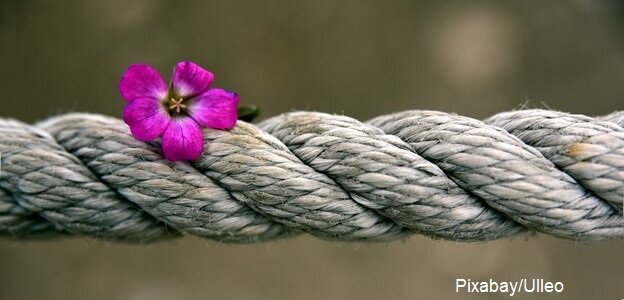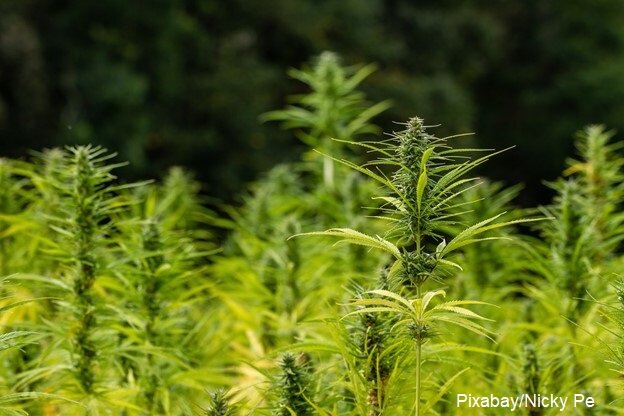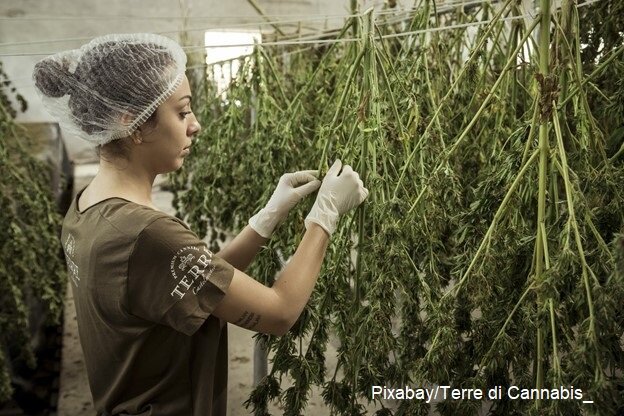How Sustainable Is Hemp Fabric?
/When you think of sustainable fabric, do you think of hemp? Maybe you should, as it demands fewer natural resources to grow, is durable, and is more resilient than cotton. We have been using hemp for hundreds of years to produce strong fabric in large quantities. During the ‘Age of Discovery,’ the explorers used hemp canvas for the sails of ships. These same sails had led men to new territories. We were openly using hemp then without prejudice. However, in 1970, the Controlled Substance Act arrived and penalized the cultivation and sales of hemp because it belonged to the family of cannabis, a Schedule 1 controlled substance.
But now, the situation is changing. Hemp has a chance to win its glory back from cotton because more and more states are legalizing and decriminalizing the cultivation of cannabis. When it comes to fabrics, it’s still true that cotton is the king, as it is a widely used raw material. However, many people are second-guessing its efficacy as fabric due to its environmental impacts. On the other hand, hemp is attracting the same environmentalists by being a sustainable fabric.
What is sustainable fabric?
Sustainable fabric is any piece of cloth with a negligible carbon footprint. The producers of such clothes use eco-friendly raw material, like hemp, whose cultivation and processing minimally harms the environment. Here are the main characteristics of a sustainable fabric,
From cultivation to processing, it requires less water than its counterparts.
It does not contain chemicals.
It results in less waste.
It lives long.
It is harmless to the human body.
Synthetic fabrics like polyester, acrylic, and rayon do not share any of these characteristics. Even conventional cotton does not conform to many standards of sustainable fabrics.
Hemp: The Sustainable Fabric
Cultivation, harvest, splitting the fibers, and then weaving it into a fabric: this is pretty much how hemp fabric is made. The production of modern-day hemp fabric is similar to the traditional method that was used over a hundred years ago. However, modern-day producers have incorporated a few changes to increase process efficiency. From growing the hemp to spinning it into a textile, everything about this plant helps save precious natural resources.
Excellent yield in fewer acres
Because of its high productivity, hemp requires less land than cotton. About 1,190 pounds of cotton fibers can be grown in one acre, which is much less than the 2,650 pounds of fiber that can be produced by hemp in the same ground. This translates to roughly 400,000 plants per acre, or 100 per square meter.
Drinking less water
Hemp’s water requirements are significantly lower than that of cotton. On average, hemp requires 80 gallons of water to produce 2 pounds of fabric. At such a quiet need, just rainwater is sufficient for the hemp plant. On the other hand, cotton utilizes 5,280 gallons (2000 liters) of water to give 2.2 pounds of fabric. Such a small quantity of cotton is barely enough to make one t-shirt and a pair of jeans out of it.
A healthy relation of hemp and soil
Hemp’s roots deeply penetrate the soil and produce biomass in a large quantity. Biomass is an organic matter that turns into nutrients after its decomposition. The deep penetration of roots prevents soil erosion and promotes aeration of the soil. Therefore, the soil becomes nutritionally rich after the farmer plows the land. These qualities also make hemp ideal for crop rotation: once hemp is harvested, more delicate plants are able to grow healthy and strong in the soil afterwards.
A way to prevent chemical pollution
Cotton is one of the most vulnerable plants, and that’s why 16% of the world’s pesticides are used for it. Cotton farmers spent a staggering amount of money on pesticides. These pesticides are hazardous, as they lead to severe disorders. Aside from these hazards, pesticides destroy local eco-systems when they escape into neighboring lakes, ponds, or other bodies of water.
Growing hemp enables cultivators to avoid some of these problems, since hemp is resistant to pests, and therefore not dependent on herbivore pesticides to grow abundantly. In fact, hemp plants grow like a dense blanket, leaving virtually no space for weeds to grow. This means that cultivators of hemp will also not need to use herbicides. Therefore, unlike cotton, hemp cultivation does not require the disbursement of harmful chemicals into the surrounding ecosystems.
Be ready in less time.
A hemp farmer can harvest his or her crops in much less time than cotton. This is because hemp only requires around 115 days to be ready for harvest.
Finally, hemp completes the criteria of being a sustainable crop because every part of this plant is useful. You can use its stalk to make the fabric, whereas the seed and leaves may also be used to make products that are beneficial, such as edible oil, rope, shoes, paper, insulation, bioplastics, and biofuel .
Benefits of hemp fabric
Now that you know some of the ways in which the hemp plant is eco-friendly and leaves a negligible carbon-print on the earth, you might want to learn about some of the reasons you should consider buying hemp fabric.
Hemp fabric is super cozy and soft. It gets cozier and smoother after each use.
It has antibacterial properties, so clothes made of hemp fabric can prevent bacterial infections.
The fabric also protects potential cancer-causing UV-light.
Hemp fabric is durable, and it gets stronger with every use.
Final Thoughts
Clothes are one of our basic needs, but this does not mean our planet has to pay a heavy price for their manufacture. From the cultivation of raw material to the disposal of old apparel, our clothes leave a gigantic carbon footprint on the earth. Now is the right time to think of sustainable alternatives. Thankfully, we have the solution by our side: hemp fabric. Just like a plant, the market for fabric made from hemp is poised to grow significantly in the coming years.
PS: Aside from these advantages, hemp has many benefits to human health – taken in supplement form, hemp can also help to reduce anxiety, increase focus and energy, and aid sleep.
Jeffery Thompson is a full-time content marketing specialist. He has been closely following the CBD and Cannabis industry trends for quite some time. He has dabbled in various domains before the cannabis industry. On his off days, he likes to spend his time at the nearest animal shelter or nose deep in a book.









































